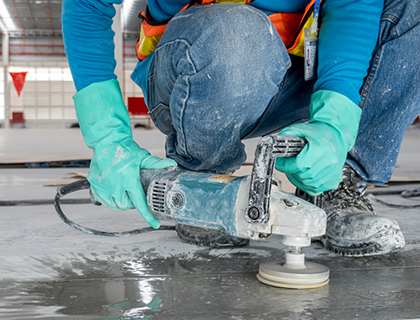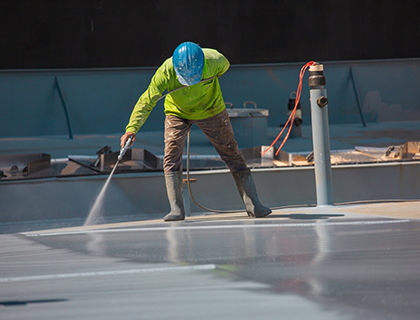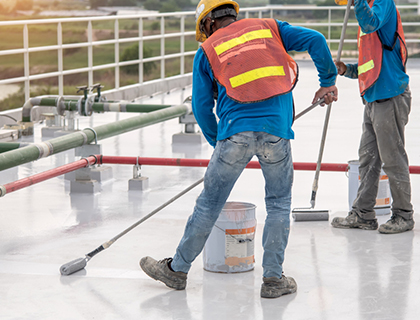Terrace waterproofing
hareesh2023-08-05T06:13:24+00:00Terrace waterproofing
Terrace waterproofing is a crucial process to protect your terrace from water damage and ensure its longevity. Terrace areas are constantly exposed to the elements, making them vulnerable to water infiltration, which can lead to structural issues and leakage problems.
Here’s a guide to terrace waterproofing:
Surface Preparation:
Before starting the waterproofing process, it’s essential to prepare the terrace surface properly. Clean the terrace of any dirt, debris, and loose materials. Repair any cracks or damages in the concrete or other terrace materials. A clean and smooth surface ensures better adhesion of the waterproofing materials.
Choose the Right Waterproofing Material:
Selecting the appropriate waterproofing material is vital for effective terrace waterproofing. There are various options available, including liquid waterproofing membranes, bitumen-based coatings, cementitious coatings, and elastomeric membranes. Each material has its advantages and suitability depending on the terrace structure and the level of waterproofing required. Consult with a waterproofing expert to determine the best option for your terrace.
Apply Waterproofing Membrane:
Once you have chosen the waterproofing material, apply it to the terrace surface following the manufacturer’s guidelines. For liquid membranes, use a brush, roller, or spray to evenly coat the surface. For sheet membranes, carefully adhere the membrane to the terrace surface, ensuring there are no gaps or overlaps.
Focus on Critical Areas:
Pay special attention to critical areas such as joints, corners, and intersections with walls or other structures. Use additional layers of waterproofing material or specialized tapes to ensure these vulnerable spots are well-protected against water infiltration.
Slope and Drainage:
Ensure that your terrace has a proper slope to allow water to drain away efficiently. Standing water can put additional stress on the waterproofing layer, leading to potential leaks. Install proper drainage systems, such as gutters, scuppers, or drains, to redirect water away from the terrace.
Protective Layers:
Consider adding protective layers over the waterproofing membrane to safeguard it from mechanical damage during construction or heavy foot traffic. Paving stones, tiles, or concrete slabs can serve as protective layers while also enhancing the terrace’s aesthetics.
Regular Maintenance:
After completing the terrace waterproofing, conduct regular inspections and maintenance. Check for any signs of damage or wear in the waterproofing layer and address any issues promptly to prevent water infiltration.
Terrace waterproofing is a critical investment that can protect your property and prevent costly repairs in the future. Hiring a professional waterproofing contractor ensures that the job is done correctly and that the right materials are used for your specific terrace requirements. With proper waterproofing, you can enjoy a safe and durable terrace for years to come.



